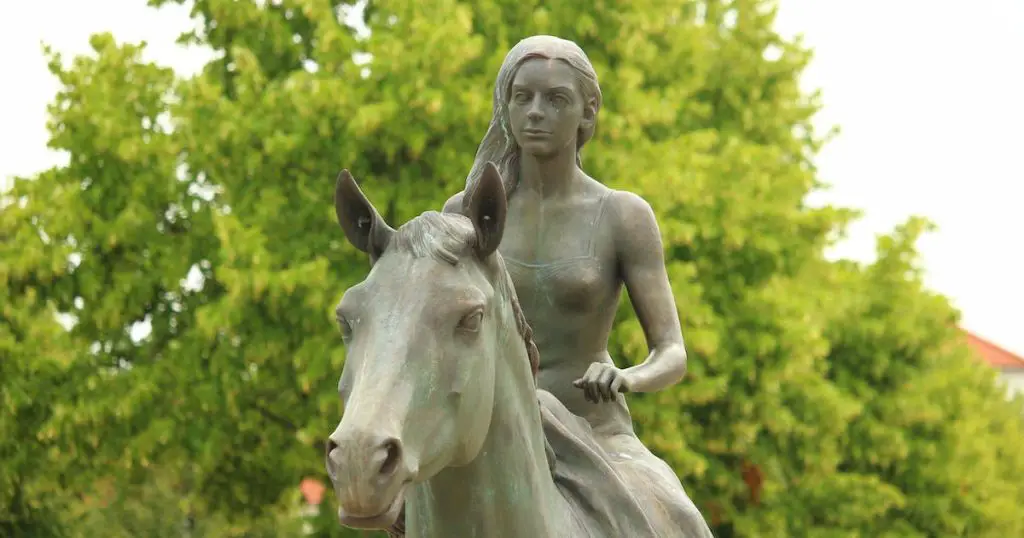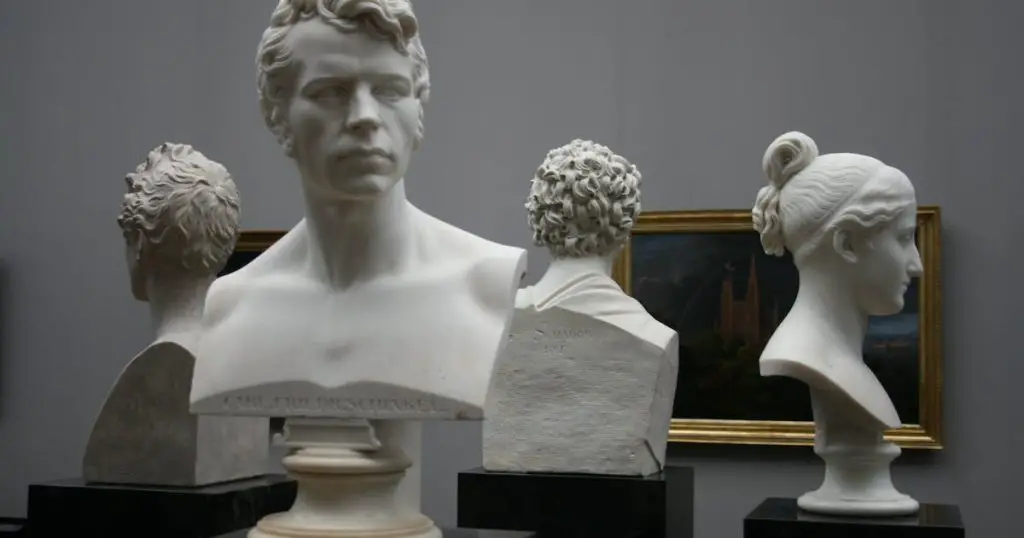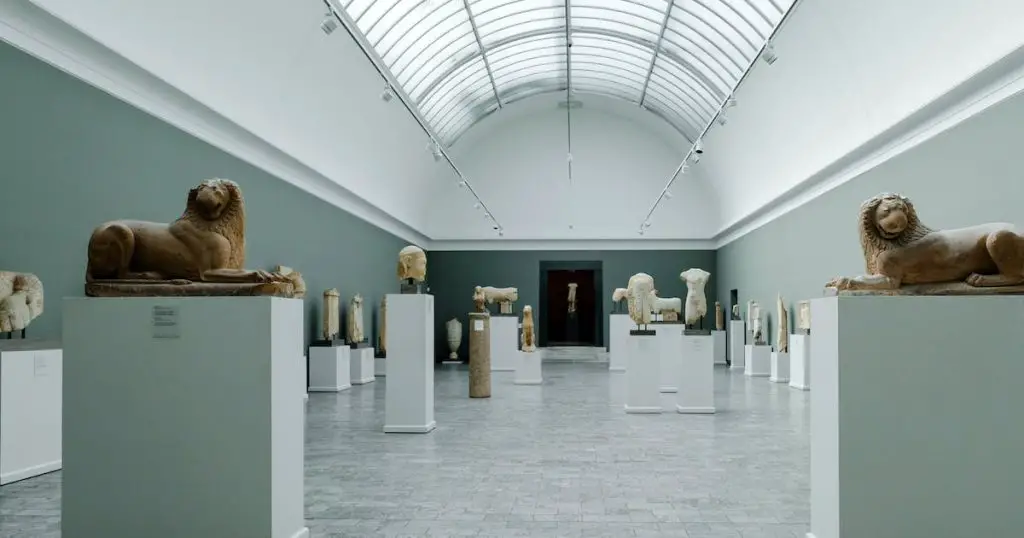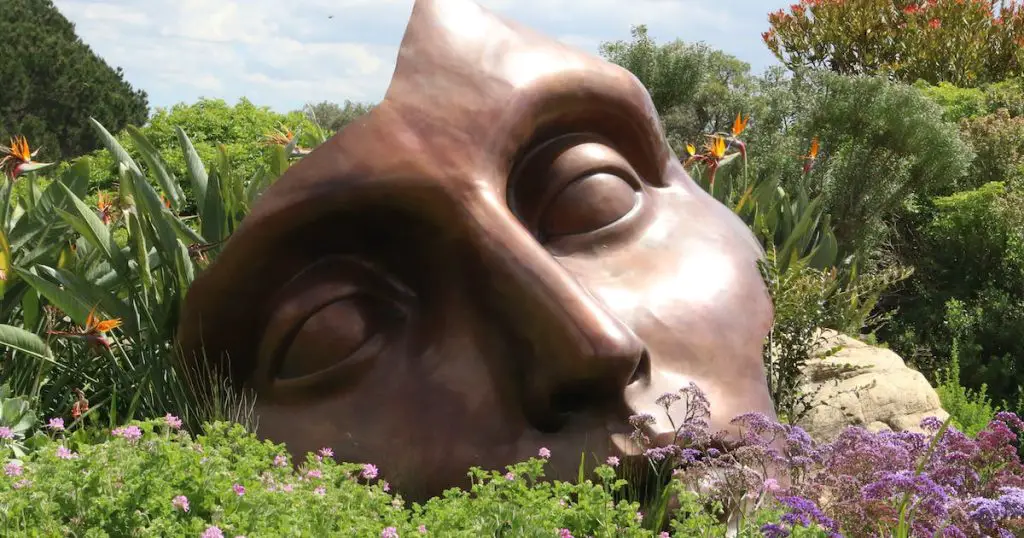The picturesque city of Prescott, nestled in the heart of Arizona, is not just a haven for nature lovers but also a sanctuary for art enthusiasts. Sculpture gardens and exhibitions in Prescott offer a unique blend of artistic creativity and natural beauty, making it a must-visit destination for those who appreciate the convergence of art and the environment.
These gardens are not just spaces to display art; they are realms where each sculpture complements the landscape, creating a harmonious and immersive experience. In this exploration of Prescott’s sculpture gardens, we delve into their historical roots, artistic diversity, and the profound impact they have on visitors and the community.

Historical Context
The concept of sculpture gardens in Prescott is deeply rooted in both local and broader artistic traditions. Tracing back to the early 20th century, these gardens have evolved from modest displays of local artistry to sophisticated spaces showcasing diverse works, reflecting both the cultural evolution of Prescott and the broader trends in sculpture.
Initially serving as extensions of galleries or private collections, they have grown into public spaces that celebrate both the natural beauty of the Arizona landscape and the creative spirit of the artists.
This historical context enriches the gardens, offering visitors not just visual splendor but also a glimpse into the artistic journey and heritage of Prescott and its role in the broader narrative of sculptural art.
Origins of Sculpture Gardens: A Global Perspective
Sculpture gardens, with their rich history, have been an integral part of artistic expression worldwide. In ancient civilizations, such as those in Egypt and Mesopotamia, sculptures were predominantly part of architectural and ceremonial sites.
It was during the Renaissance in Europe that the concept of a sculpture garden, as a space dedicated to the appreciation of freestanding sculptures, began to take shape.
These historic roots give us insight into how sculpture gardens have evolved over the centuries. For more on the history of sculpture gardens globally, the Smithsonian Institution offers an excellent resource here.
The Growth of Sculpture Gardens in Prescott: A Historical Overview
In Prescott, the concept of sculpture gardens took root in the early 20th century. Initially, these spaces were extensions of art galleries and museums, but gradually they transformed into standalone attractions that merged local artistry with the natural landscapes of Arizona.
Prescott’s early sculpture gardens were modest, featuring works primarily from local artists. However, as the city grew, so did the scope and ambition of these spaces. Today, Prescott is home to gardens that showcase both national and international artists. The Prescott Art Museum provides a timeline of this artistic evolution in the city.
Major Sculpture Gardens and Exhibitions in Prescott
Prescott is home to several major sculpture gardens and exhibitions, each offering a unique artistic experience set against the backdrop of Arizona’s natural beauty. These include the renowned Acker Park Sculpture Garden, where art merges with the wilderness, and the Sharlot Hall Museum Outdoor Sculpture Garden, which celebrates the region’s rich cultural heritage.
Seasonal exhibitions add to the allure, with annual events showcasing both established and emerging artists. These spaces not only exhibit a wide range of sculptural art but also serve as cultural landmarks, drawing visitors from near and far to experience the dynamic interplay of art, history, and nature that these gardens so beautifully encapsulate.
Iconic Spaces: An Overview of Prescott’s Premier Sculpture Gardens
Prescott boasts several sculpture gardens, each with its own unique charm and collection. The most prominent among them is the Acker Park Sculpture Garden, which seamlessly blends art with natural elements. Here, sculptures are strategically placed along walking trails, offering a serene art walk experience.
Another notable space is the Sharlot Hall Museum Outdoor Sculpture Garden. This garden focuses on sculptures that reflect the rich history and culture of the Southwest. For a detailed guide to these gardens, visit Prescott’s Official Tourism Site.
Seasonal Exhibitions: Yearly Highlights in the Sculpture World
The ever-changing beauty of Prescott’s landscape offers a dynamic backdrop for seasonal exhibitions in sculpture gardens. These exhibitions bring fresh perspectives and new artworks, keeping the gardens vibrant and engaging throughout the year.
The Spring Sculpture Showcase, for example, introduces bright and whimsical pieces that echo the season’s spirit. The Prescott Fall Sculpture Festival, on the other hand, features more introspective works that complement the autumnal setting. Prescott’s Annual Events Calendar provides a glimpse into these seasonal exhibitions.
Design and Layout
The design and layout of Prescott’s sculpture gardens are masterfully crafted to create harmonious spaces where art and nature seamlessly intertwine. The thoughtful arrangement of sculptures within the natural landscape allows for a fluid interaction between the artworks and their surroundings, enhancing the overall aesthetic experience.
Pathways meander through the gardens, inviting visitors to embark on a journey of discovery where each turn reveals a new perspective or a hidden gem. Attention to detail in landscaping, from the placement of benches for contemplation to the selection of complementary flora, ensures that each visit to these gardens is both a visual delight and a tranquil retreat from the hustle and bustle of everyday life.
Architectural Harmony: Design Principles of Sculpture Gardens
The design of sculpture gardens in Prescott is a study of balance and harmony. These gardens skillfully blend the rugged beauty of Arizona’s landscape with the refined elegance of sculptural art. The key lies in the thoughtful placement of sculptures, where each piece is positioned to complement the natural surroundings, whether it be against the backdrop of towering pines or amidst a cluster of desert flora.
Landscaping plays a crucial role in these gardens, with pathways, water features, and native plants all contributing to a cohesive aesthetic. The American Society of Landscape Architects provides excellent insights into the principles of landscape design that are often applied in sculpture gardens.
Exploring Prescott’s sculpture gardens is a journey through curated natural and artistic landscapes. The gardens are designed to be navigated with ease, allowing visitors to immerse themselves in the art and nature symbiotically. Signage and guides are strategically placed, offering interesting anecdotes and insights into the artworks and their creators.
For visitors planning their trip, detailed maps and guides are available on Prescott’s Sculpture Garden Trails, ensuring a fulfilling and educational experience.

Sculpture Styles and Materials
In Prescott’s sculpture gardens, a diverse array of styles and materials come together to showcase the rich spectrum of sculptural art. From classic bronze and elegant marble to contemporary steel and innovative mixed media, these materials are carefully chosen to enhance the artistic expression of each piece.
The styles represented in the gardens range from traditional, realistic forms to abstract, modern designs, reflecting the evolution of sculpture as an art form.
This variety not only provides an aesthetic feast for the eyes but also serves as an educational journey through the history and techniques of sculpture, offering a comprehensive view of the art form’s versatility and adaptability over time.
From Stone to Metal: Diverse Materials in Prescott’s Sculptures
The sculptures in Prescott’s gardens showcase a diverse range of materials, each lending a different texture and feel to the artwork. Stone sculptures, with their timeless and sturdy nature, provide a sense of permanence and history. Metal sculptures, by contrast, reflect light and surroundings, often creating dynamic interactions with the changing environment.
These materials, ranging from traditional bronze and marble to modern stainless steel and glass, demonstrate the evolution of sculptural mediums. For more on sculptural materials and techniques, The Sculpture Foundation offers a wealth of information.
A Spectrum of Styles: Understanding Artistic Variations
The sculptures in Prescott range from classical forms to contemporary abstracts, offering a visual representation of the evolution of artistic styles. Classical sculptures often depict figures and scenes, rooted in historical and cultural narratives, while contemporary pieces might challenge viewers with abstract forms and innovative themes.
This stylistic diversity not only showcases the artistic range but also caters to varied aesthetic preferences, making the gardens appealing to a broad audience. Art History Resources provides an in-depth look at different sculptural styles through the ages.
Artists and Sculptors
Local Legends: Prominent Sculptors of Prescott
Prescott’s sculpture gardens are a testament to the talent of local artists. These artists, through their diverse styles and themes, have significantly contributed to the cultural landscape of the city.
Among them are sculptors like John Soderberg, whose bronze works reflect deep human emotions, and Kate T. Cory, known for her sculptures that capture the essence of the Southwest.
Their stories and works are featured prominently in local galleries and can be further explored in Prescott’s Local Artists’ Directory.
Guest Artists: National and International Contributions
Beyond local talent, Prescott’s sculpture gardens also feature works from nationally and internationally acclaimed artists. These guest artists bring a global perspective to the gardens, introducing new techniques and concepts.
This blend of local and global artistry enriches the cultural experience of the gardens, making each visit a discovery of different artistic expressions. For profiles of some of these artists, the International Sculpture Center is an invaluable resource.
Thematic Focus
The thematic focus of Prescott’s sculpture gardens is a captivating blend of natural beauty and artistic expression, where each piece is thoughtfully curated to reflect and complement its surroundings. Themes range from the interplay of human and natural forms to reflections on contemporary social and environmental issues, offering visitors a rich tapestry of ideas and perspectives.
This thematic diversity not only enhances the visual appeal of the gardens but also invites contemplation and discussion, making the gardens a space where art becomes a medium for understanding and connecting with the broader world. Through these themes, Prescott’s sculpture gardens offer a unique lens to view the intersection of art, nature, and human experience.
Nature and Art Intertwined: Themes in Prescott’s Sculpture Gardens
Prescott’s sculpture gardens often reflect themes where nature and art are intimately intertwined. These themes are evident in sculptures that mimic natural forms or in those that use the surrounding landscape as an integral part of the artwork.
The synergy between art and the natural world in these gardens offers a unique lens through which visitors can appreciate both.

Themes such as the resilience of nature, the beauty of the Arizonian landscape, and environmental awareness are common. This thematic focus not only enhances the visual experience but also encourages visitors to contemplate deeper ecological and philosophical messages.
Societal Reflections: Contemporary Themes in Sculptures
Many sculptures in Prescott also address contemporary societal issues. These artworks serve as mediums for artists to express their views on topics like social justice, cultural identity, and historical events. The presence of such themes adds a layer of intellectual engagement to the visitor experience, prompting reflection and discussion.
To explore more about how contemporary art reflects societal themes, visitors can check resources like Contemporary Art Society.
Visitor Experience
Visiting Prescott’s sculpture gardens offers a rich and multifaceted experience, where art and nature coalesce to create an environment of discovery and wonder. As visitors meander through these tranquil spaces, they encounter a diverse array of sculptures that provoke thought, evoke emotion, and celebrate creativity.
Interactive elements and thoughtfully designed landscapes enhance the sensory experience, making each visit unique. Whether it’s a peaceful solitary walk, an educational tour, or an interactive art workshop, the gardens provide an immersive and engaging experience that resonates with visitors long after they’ve left, making each visit a memorable journey through the world of art and nature.
A Journey of Discovery: The Visitor’s Path through the Gardens
Visiting a sculpture garden in Prescott is more than just a leisurely stroll; it’s a journey of discovery. As visitors navigate these spaces, they encounter surprises at every turn – a hidden sculpture nestled among bushes, a sudden panoramic view, or an interactive installation that invites participation.
This journey is designed to be self-paced and personal, allowing visitors to connect with the art and environment in their own way. Information plaques and digital guides, available through the Prescott Sculpture Garden App, enhance this experience by providing context and background on each piece.
Interactive Features: Engaging with Sculpture Art
Prescott’s sculpture gardens are not just about passive observation; they actively engage visitors. Interactive features like tactile sculptures, kinetic art pieces, and augmented reality experiences bring an element of play and exploration.
These features are particularly popular among younger visitors, making the gardens a family-friendly destination.
Interactive art workshops and guided tours, details of which can be found at Prescott Art Workshops, further enrich the visitor experience.
Educational and Cultural Impact
The educational and cultural impact of Prescott’s sculpture gardens is profound and far-reaching. These spaces serve as open-air classrooms, fostering an appreciation for art, nature, and history among visitors of all ages.
Through interactive tours, artist workshops, and educational programs, the gardens provide valuable insights into the creative process and the role of art in society. They also act as cultural hubs, hosting a variety of community events and exhibitions that enrich the local cultural scene.
In essence, Prescott’s sculpture gardens are more than just venues for art display; they are vibrant centers for learning, inspiration, and community engagement, playing a pivotal role in the cultural enrichment of the city.
Learning Through Art: Educational Programs in Sculpture Gardens
The sculpture gardens in Prescott are not only artistic hubs but also centers of learning. Educational programs such as artist talks, sculpture-making workshops, and guided educational tours are regularly organized.
These programs cater to all ages, from school children to adults, and are designed to foster an appreciation of art and nature.
Cultural Significance: The Role of Sculpture Gardens in Community Building
Sculpture gardens in Prescott play a vital role in community building. They serve as gathering spaces where people can experience art collectively, discuss ideas, and participate in cultural events.
These gardens, therefore, are not just tourist attractions but integral parts of Prescott’s cultural identity.
Community events and cultural festivals held in these gardens are listed on Prescott Community Events.
Preservation and Sustainability
Preservation and sustainability are at the forefront of managing Prescott’s sculpture gardens, where the delicate balance between art, nature, and ecological responsibility is meticulously maintained.
Efforts to preserve the integrity of these artistic spaces include using sustainable materials in sculptures, adopting eco-friendly landscaping practices, and implementing conservation strategies for existing artworks.
These initiatives ensure that the gardens not only continue to provide a serene and inspiring environment for visitors but also contribute to the wider goals of environmental stewardship and cultural heritage preservation, safeguarding these treasures for future generations to appreciate and enjoy.
Conserving Art and Nature: Sustainability in Sculpture Gardens
Sustainability is a key focus in the management of Prescott’s sculpture gardens. Efforts are made to ensure that the environmental impact is minimized, from using eco-friendly materials in sculptures to implementing sustainable landscaping practices.
Conservation of artworks, especially those made from sensitive materials, is also a priority.
Restoration Efforts: Preserving Prescott’s Sculptural Heritage
Restoration and preservation of sculptures are vital to maintaining the historical and artistic integrity of Prescott’s gardens. Restoration efforts often involve collaboration between artists, conservators, and the community.

This not only preserves the artworks for future generations but also educates the public about the importance of art conservation.
The Future of Sculpture Gardens in Prescott
The future of sculpture gardens in Prescott holds immense promise, as the city continues to embrace innovation and diversity in its artistic expressions. With plans to integrate modern technologies and environmentally sustainable practices, these gardens are set to evolve into spaces where cutting-edge art meets ecological mindfulness.
The inclusion of interactive and digital installations, along with an increasing emphasis on showcasing a diverse range of artists and themes, will further enrich the cultural landscape of Prescott.
This evolution promises not only to enhance the aesthetic experience of visitors but also to reinforce the role of these gardens as vital, dynamic spaces for community engagement and artistic exploration.
Innovations on the Horizon: Future Developments in Sculpture Art
The future of sculpture gardens in Prescott is bright, with plans for expansion and incorporation of new technologies and artistic methods. Future developments include interactive digital installations, environmentally responsive sculptures, and collaborations with international artists.
These innovations aim to redefine the boundaries of sculpture art and garden design, promising an even more immersive and engaging experience for visitors.
For insights into the future of public art and sculpture, the Public Art Review offers a glimpse into upcoming trends and innovations.
Expanding the Narrative: Upcoming Projects and Exhibitions
Prescott continues to expand its narrative in the world of sculpture art with upcoming projects and exhibitions. These future exhibitions are set to feature a broader array of artists, including underrepresented groups and emerging talents, further enriching the cultural tapestry of the city.
To stay updated on upcoming projects and exhibitions in Prescott’s sculpture gardens, enthusiasts can visit Prescott Art Exhibitions.
FAQs:
In this section, we will be delving into some of the most common inquiries and curiosities that surround our topic.
What are the most famous sculptures in Prescott’s gardens?
Among the most renowned sculptures in Prescott are John Soderberg’s “Flight of Peace” and Kate T. Cory’s “Spirit of the Southwest.”
How do the seasons affect the sculpture garden experience?
Each season brings a unique charm to the sculpture gardens. Spring and summer highlight the vibrancy of the artworks against a lush backdrop, while autumn and winter offer a more subdued and reflective ambiance.
Are there special events or programs for visitors?
Yes, the sculpture gardens host a variety of events, including artist-led tours, sculpture workshops, and seasonal festivals. For a full list of events, visit Prescott Sculpture Garden Events.
How can one contribute to the preservation of these gardens?
Contributions can be made through donations, volunteering, or participating in conservation programs. More information can be found at Prescott Garden Preservation.
Conclusion
Prescott’s sculpture gardens are more than just spaces for displaying art; they are vibrant, living canvases that intertwine art, nature, and community. These gardens have become a crucial part of Prescott’s cultural identity, offering a space for reflection, inspiration, and connection.
As we have journeyed through their historical roots, artistic diversity, and the profound impact they have on visitors and the community, it’s clear that these gardens will continue to be cherished spaces, evolving and inspiring future generations.



Leave a Comment
You must be logged in to post a comment.